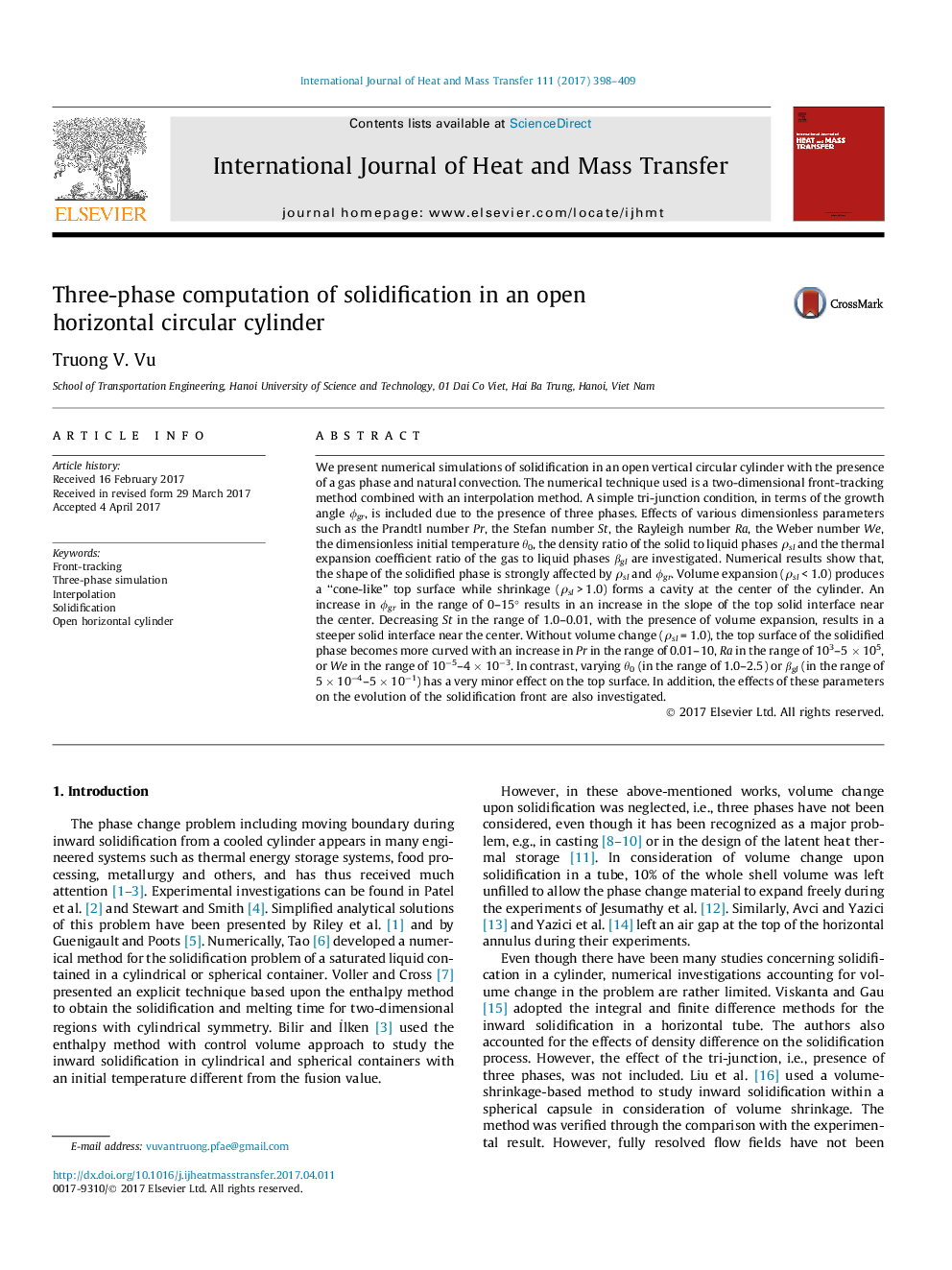| Article ID | Journal | Published Year | Pages | File Type |
|---|---|---|---|---|
| 4994083 | International Journal of Heat and Mass Transfer | 2017 | 12 Pages |
Abstract
We present numerical simulations of solidification in an open vertical circular cylinder with the presence of a gas phase and natural convection. The numerical technique used is a two-dimensional front-tracking method combined with an interpolation method. A simple tri-junction condition, in terms of the growth angle Ïgr, is included due to the presence of three phases. Effects of various dimensionless parameters such as the Prandtl number Pr, the Stefan number St, the Rayleigh number Ra, the Weber number We, the dimensionless initial temperature θ0, the density ratio of the solid to liquid phases Ïsl and the thermal expansion coefficient ratio of the gas to liquid phases βgl are investigated. Numerical results show that, the shape of the solidified phase is strongly affected by Ïsl and Ïgr. Volume expansion (Ïsl < 1.0) produces a “cone-like” top surface while shrinkage (Ïsl > 1.0) forms a cavity at the center of the cylinder. An increase in Ïgr in the range of 0-15° results in an increase in the slope of the top solid interface near the center. Decreasing St in the range of 1.0-0.01, with the presence of volume expansion, results in a steeper solid interface near the center. Without volume change (Ïsl = 1.0), the top surface of the solidified phase becomes more curved with an increase in Pr in the range of 0.01-10, Ra in the range of 103-5 Ã 105, or We in the range of 10â5-4 Ã 10â3. In contrast, varying θ0 (in the range of 1.0-2.5) or βgl (in the range of 5 Ã 10â4-5 Ã 10â1) has a very minor effect on the top surface. In addition, the effects of these parameters on the evolution of the solidification front are also investigated.
Related Topics
Physical Sciences and Engineering
Chemical Engineering
Fluid Flow and Transfer Processes
Authors
Truong V. Vu,
